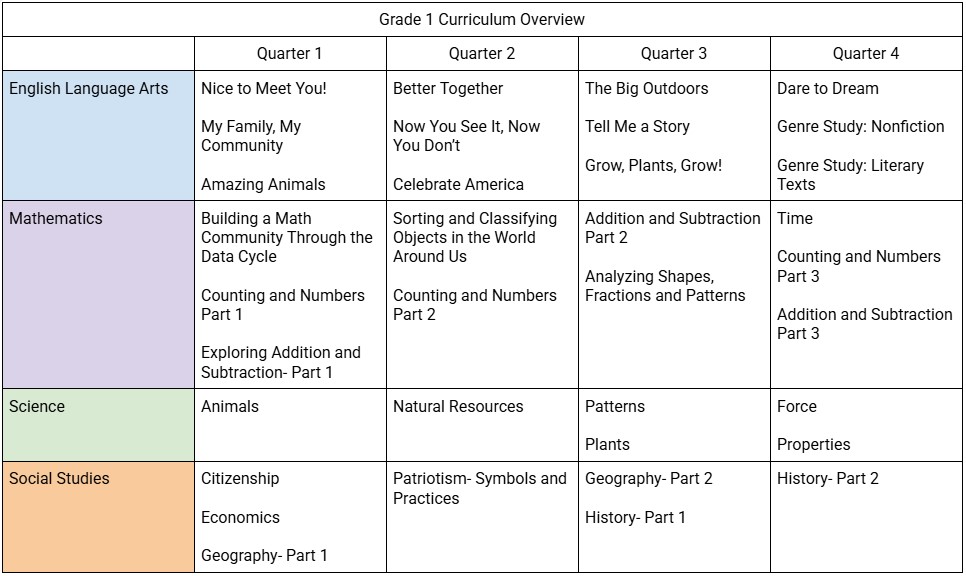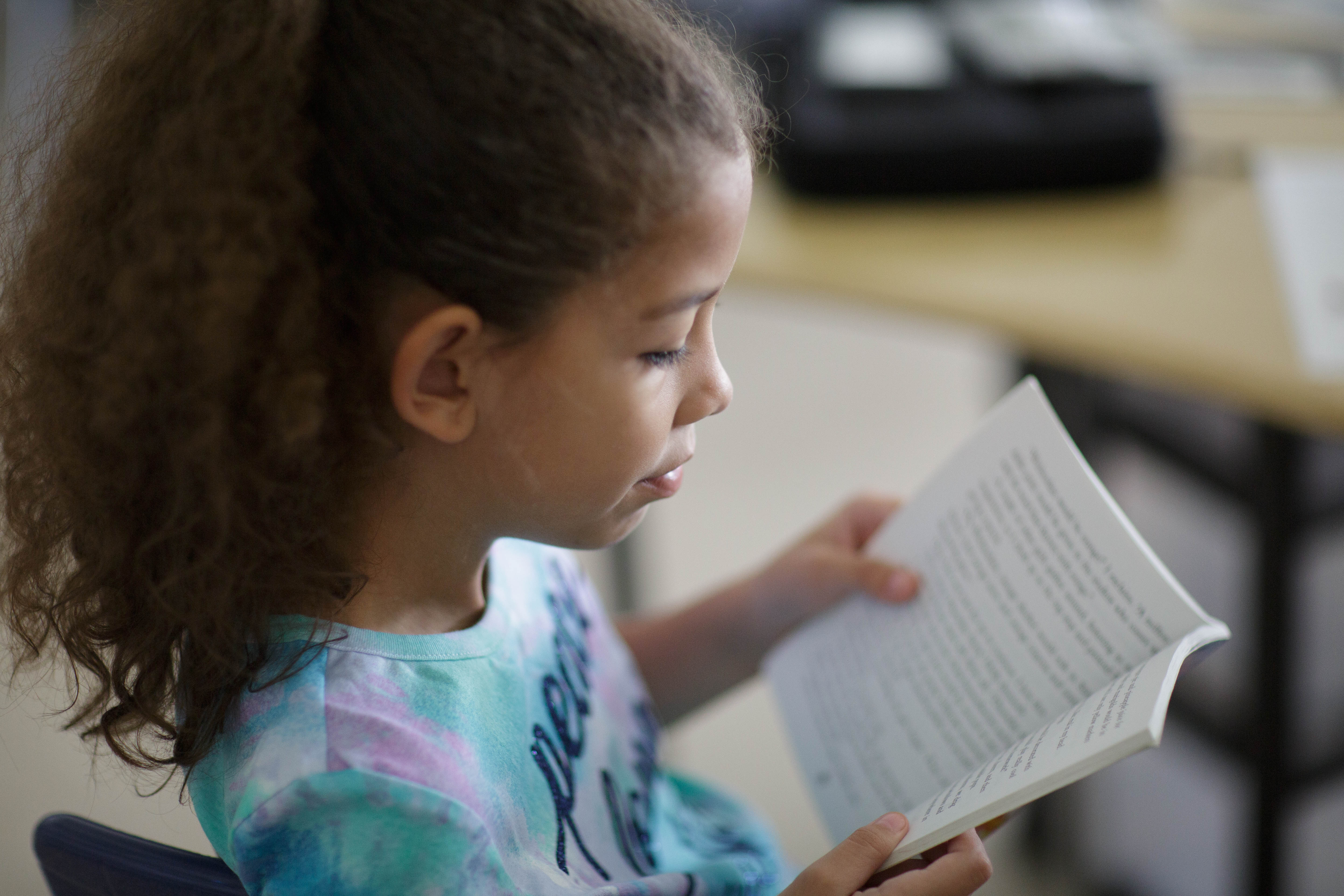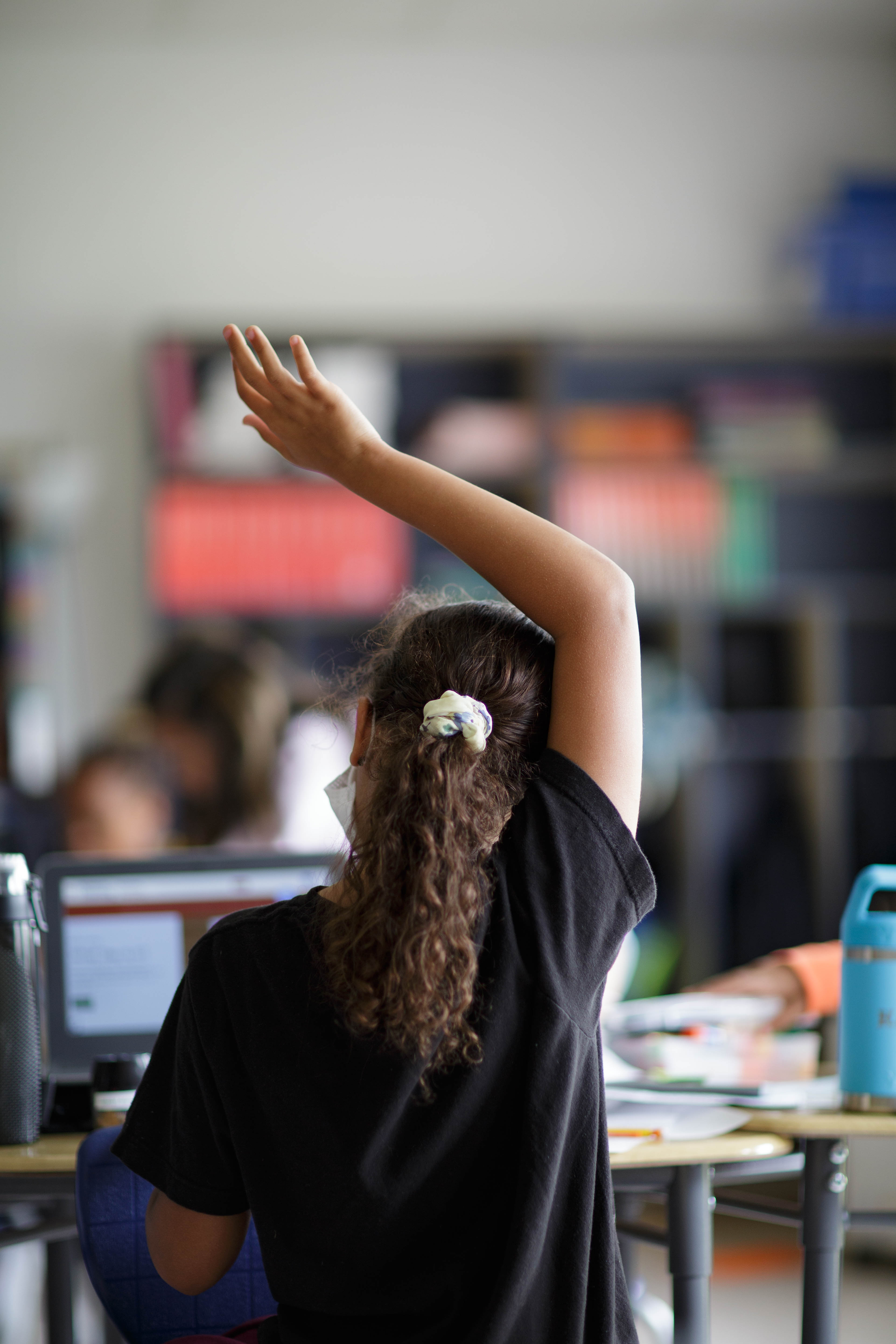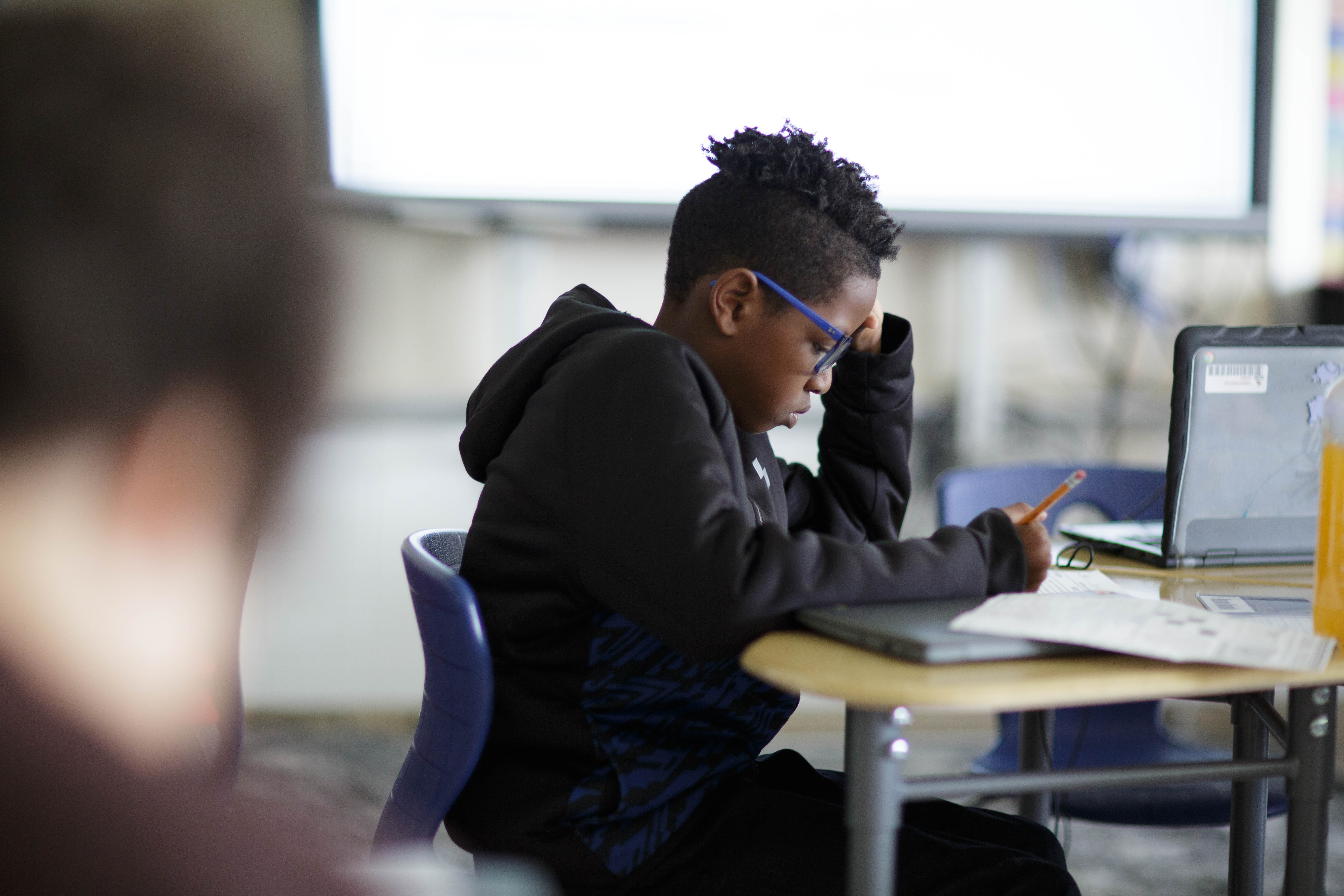
Language Arts
The first grade language arts program focuses on the broad areas of communication, reading, writing and research. Students will be introduced to a wide variety of fiction and nonfiction literature which will serve as a basis for instruction and practice in phonics, vocabulary, comprehension, fluency, and writing.
Communication and Multimodal Literacies
- Develops oral communication skills
- Demonstrates growth in oral, early literacy skills
Reading
-
Orally identifies, produces, and manipulates phonemes to develop phonological and phonemic awareness
-
Applies phonetic principles to read and spell
-
Expands vocabulary and use of word meanings
-
Reads and demonstrates comprehension of a variety of fictional texts
-
Reads and demonstrates comprehension of a variety of nonfiction texts
Writing and Research
- Writes in a variety of forms
- Edits writing for capitalization, punctuation and spelling
- Conducts research to answer questions or solve problems
Click here for a detailed storyboard for Grade 1 English Language Arts
Click here for more information about the Virginia Standards of Learning in Grade 1 Language Arts

Mathematics
The first-grade mathematics program continues to expand number sense by investigating the ten-to-one relationship in the Base-10 number system. Problem-solving is fostered through computation, measurement, and analysis of data. In addition, visual and spatial relationships are explored as students continue to examine geometric figures and their attributes. Although students continue to recognize and extend repeating patterns, increasing patterns will be investigated as well.
Numeration and Computation
- Understand numbers, the ways of representing whole numbers and rational numbers, and the relationships that exist among these numbers and number systems
- Understand the meanings of addition and subtraction and compute using whole numbers
Geometry and Measurement
- Understand and apply knowledge of time, money, and measurement tools
- Analyze characteristics and properties of plane (two-dimensional) geometric shapes
Probability and Statistics
- Create questions and construct answers by collecting, organizing, and displaying data
Patterns, Functions, and Algebra
- Understand a variety of patterns
- Represent and analyze mathematical situations and structures using algebraic symbols
Click here for a detailed storyboard for Grade 1 Mathematics
Click here for more information about the Virginia Standards of Learning in Grade 1 Mathematics

Science
The first grade science program focuses on using scientific and engineering practices to investigate and understand nature and everyday objects, while learning how people interact with the world. Students will learn fundamental practices of scientific investigation, engineering design and begin to apply these skills by exploring topics such as properties of objects, basic needs and characteristics of living things (plants and animals), seasonal changes and other common patterns in nature.
Force, Motion, and Energy
- Classify objects according to type of movement (straight, circular, back-and-forth)
- Describe the relationship between vibration and sound
Matter
- Make and communicate observations about the physical properties of materials
- Investigate how the type and amount of material can affect the amount of light that can pass through an object
Living Systems and Processes
- Explain basic needs and characteristics of plants and animals
- Classify plants and animals according to basic characteristics
Earth and Space Systems
- Understand the sun is the source of energy and light which warms Earth’s surfaces
- Investigate and observe patterns occurring in nature, to include the movement of the sun during the day as well as seasonal and weather patterns
- Understand how patterns and changes in nature can affect plants and animals
Earth Resources
- Identify natural resources
- Explore how resources can be conserved
Click here for a detailed storyboard for Grade 1 Science
Click here for more information about the Virginia Standards of Learning in Grade 1 Science

Social Studies
In first grade, the social studies program is integrated in the language arts curriculum and focuses on the concept of community. Students will learn to apply the traits of a good citizen and recognize that communities in Virginia include people who have diverse ethnic origins, customs, and traditions, who make contributions to their communities, and who are united as Americans by common principles. They will study the economic concepts of goods and services and making economic choices, as well as the development of map skills and an understanding of location. Finally, students will begin developing foundational knowledge of Virginia history including influential people and their contributions.
Civics
- Practice and apply citizenship skills
- Explain how citizens help the community make decisions
- Identify traditions and symbols of the United States and the Commonwealth of Virginia
Economics
- Identify characteristics of an economic system (producers, consumers; goods and services)
- Explain the role of money in an economy and the reasons that people must make economic choices
Geography
- Describe how the physical environment affects the way people live
- Recognize basic elements on maps and globes
- Interpret and construct maps
- Use map skills to determine location
History
- Identify and explain historical events
- Identify the contributions of famous Virginians and people associated with major holidays
Click here for a detailed storyboard for Grade 1 Social Studies
Click here for more information about the Virginia Standards of Learning in Grade 1 Social Studies
